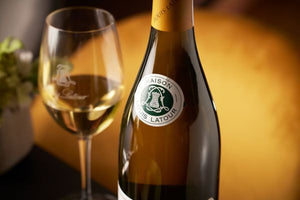How to Decode a French Wine Label
By: Rachel King / September 8, 2024
Decoding a French wine label can feel like unraveling a mystery, especially for those new to the world of wine. Unlike many New World wines that prominently display grape varieties and easy-to-understand information, French labels often offer a more subtle, nuanced approach.
What are the essential elements found on a French wine label, and how do they differ from labels of wines from other countries?

The key difference between French wine labels and labels from, say, the New World is that French wine labels indicate the wine’s region instead of its grape. French labels emphasize the appellation and producer to convey the wine’s heritage and adherence to traditional winemaking standards, reflecting the importance of terroir and regional characteristics.
Appellation: This indicates the specific region where the grapes are grown and is often prominently displayed in large font on the front of the label. Some examples of appellations include "Chablis" or "Puligny-Montrachet." The French appellation system (AOC or AOP) is crucial as it guarantees the wine’s origin and adherence to regional production standards.
Classification: For certain regions, classifications such as “Grand Cru” or “Premier Cru” may indicate the wine’s quality level and vineyard prestige. Because the concept of terroir is so important, the quality rating depends on the specific plot of land rather than the producer.
How can a consumer determine the region and sub-region of a French wine by looking at the label, and why is this information important?
Examine the appellation name on the label to determine the region and sub-region of a French wine. This is typically prominently displayed under the producer's name and is the best indicator of the type of grapes from which the wine is made. The prominent regions you may find on French wine bottles include Burgundy, Bordeaux, Champagne, Rhône Valley and Alsace, for example. Each of these regions is renowned for its unique wine styles and terroirs.
The sub-regions follow the appellation and indicate the village where the grapes were grown. For example, a bottle labeled “Louis Latour Chassagne-Montrachet” indicates that the wine comes from the Chassagne-Montrachet village in the Côte de Beaune region. Recognizing these regional designations helps consumers understand the wine’s flavor profile and quality, as each Burgundy sub-region imparts distinct characteristics to its wines, influenced by its unique terroir.
Read full article Forbes.com





